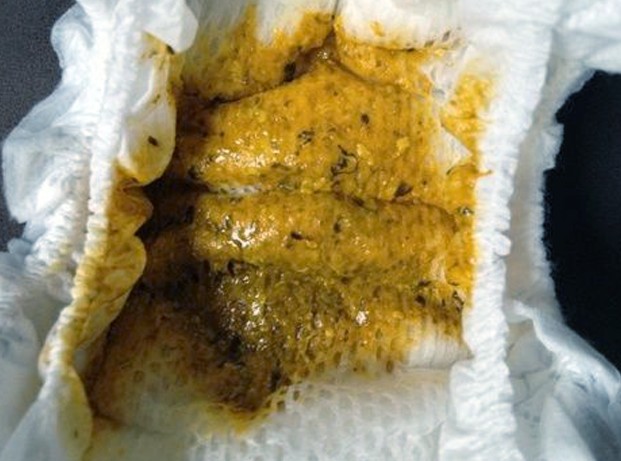

Waiting around for poop without assessing how well a baby is breastfeeding can put a mother’s milk supply and baby’s health at risk.

If a baby is not pooping the most likely reason will be that he is not getting enough breast milk and this needs urgent attention. The idea that a breastfed baby has no waste and therefore doesn’t poo very often in the first few days or weeks of life is not evidence-based. Wambach and Spencer recommend that if more than 24 hours pass without a stool in the first four to six weeks of life the baby should be seen by a health care provider and an assessment made of their milk intake (Wambach and Spencer, 2020). However, if a baby continues to lose weight or is not gaining weight coupled with few or no poops, the most likely cause is they are not getting enough breast milk (Wambach and Spencer, 2020). When this happens, the daily colour changes in the nappy and the amount of poop can serve as reassurance that breast milk is being swallowed despite a little initial weight loss. Plenty of mustard poop by day four or five shows breastfeeding is going wellĭuring the first five days some babies lose a little weight, newborns can lose up to 7% of their birth weight in the early days of life and this is considered “normal”. 3 4 However the nappy output is only one factor in the assessment of a baby’s calorie intake, health and well-being and it is important to have regular weight checks and be aware of all the ways to assess if a baby is getting enough milk (Wambach and Spencer, 2020). The colour changes towards yellow poop, along with plenty of dirty nappies are a guide that your breastfed baby is drinking plenty of colostrum (the first secretion from the breasts after giving birth) and breast milk. 2 If you are not seeing plenty of dirty nappies, asking for support with breastfeeding will help check if a baby is getting enough breast milk. Authors Wambach and Spencer say to expect two to four dirty nappies each day in the first two days, two to five dirty nappies each day between days three and four and anything between two and six dirty nappies each day between days four and seven. Lactation consultant Marsha Walker says to expect one poop on day one, rising to three or four on day three, and around four large (or ten small) poops by day four or five 1. Reference books vary slightly on the average number of dirty nappies to expect each day in the first week. If you are not seeing these colour changes on these days, asking for early support with breastfeeding will help to make sure your baby is getting enough breast milk.


Over the next few days, breastfed baby poop tends to change through a predictable sequence of colours as the baby drinks more and more breast milk. Meconium is black, thick and sticky and will be passed in the first two days after birth. The very first poop your baby passes on the first day of life is called meconium. Breastfed baby poop in the first week Colour of poop in the first five days


 0 kommentar(er)
0 kommentar(er)
